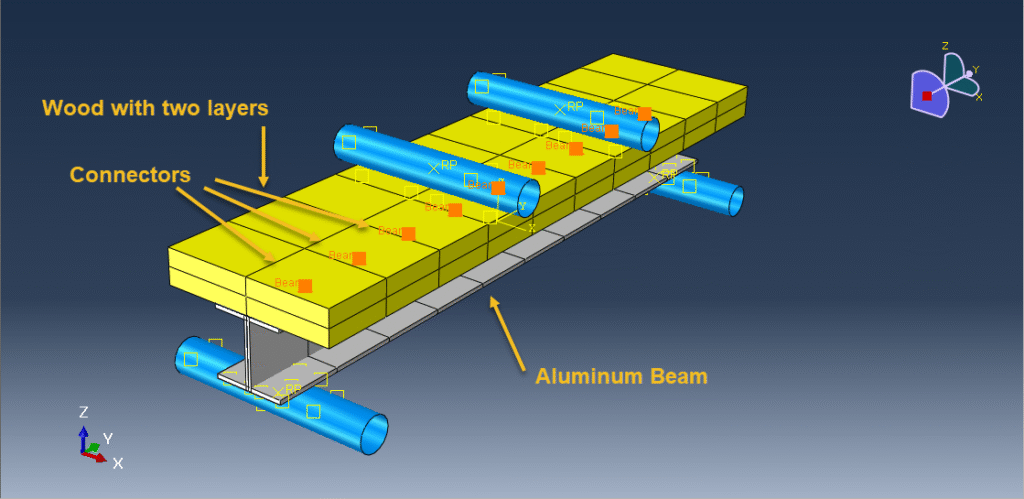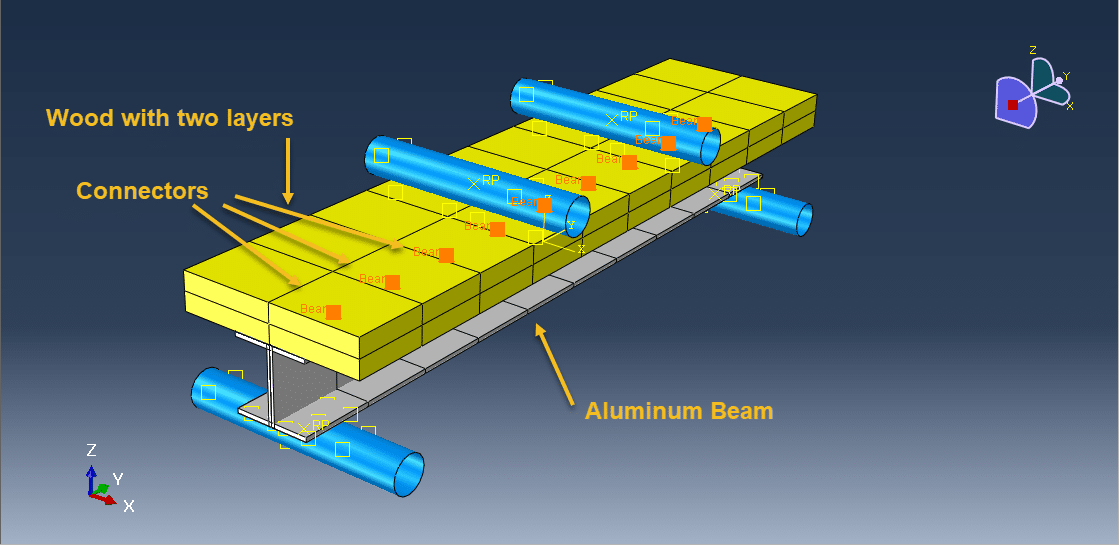Packages & Tutorials
Engineering Files & Tools
Software

Ready-to-use Models (FEA/CFD)

Excel Sheets & Hand Calculations










Composite beams, made by combining two or more distinct materials, offer unique mechanical advantages by utilizing the strengths of each constituent. One such example is the aluminium-timber composite beam, which merges the high strength-to-weight ratio and corrosion resistance of aluminium with the renewable, lightweight, and ductile properties of timber.
The bending test is a fundamental mechanical test used to evaluate the flexural behavior of such composite beams. It helps determine critical properties such as flexural strength, stiffness (modulus of elasticity), and failure modes. Understanding the bending performance of aluminium-timber composite beams is essential for their application in structural engineering, particularly in construction, transportation, and modular architecture.
The bending test assesses how a composite beam resists deformation under a load applied perpendicular to its longitudinal axis. For aluminium-timber beams, it reveals how the two materials interact under stress, including how they share the load and where potential failure may occur.
The bending test analysis of an aluminium-timber composite beam provides valuable insight into the structural efficiency and failure mechanisms of hybrid beams. It is crucial for optimizing design, ensuring safety, and validating predictive models. Given the push toward sustainable and lightweight construction, such composite systems are becoming increasingly relevant in modern engineering applications.


Dynamic
€1,00 €0,00
See more

Want to receive push notifications for all major on-site activities?